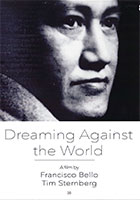
Dreaming Against the World 2015
Distributed by Grasshopper Films, 12 East 32nd St., 4th Floor, New York, NY 10016
Produced by Tim Sternberg, Francisco Bello, Frederick L Gordon, Scott Mosier
Directed by Tim Sternberg, Francisco Bello
DVD, color, 35 min.
Middle School - General Adult
Artists, Writers, Biography, China, Human Rights, Cultural Revolution
Date Entered: 02/03/2017
Reviewed by Barbara J. Walter, Longmont Public Library, Longmont, CO“While illegally imprisoned during China’s Cultural Revolution, Mu Xin risked his life to write and paint. If caught he risked execution, but it was against these perilous odds that Mu Xin created an astonishing body of work that merged East and West, the ancient and the modern, terror and transcendence. It was through his artistic faith that he survived, while so many others did not. “
--www.rv-films.com
Oscar and Emmy-nominated filmmakers Tim Stern (Salim Baba (2007)) and Francisco Bello (War Don Don) craft a quietly moving tribute to “one of the most original yet largely unknown artists of the 20th century” (Ropa Vieja Films website). Through interviews shot on location in China and New York, period film and newsreel clips, photos and home video, plus dramatizations of pivotal events in the artist’s life, Stern and Bello describe the artist’s roots: well-to-do family, access as a teen to the best of both Western and Eastern culture, a classical education in art; the tumultuous events in China: the Sino-Japanese War, Communist takeover and Cultural Revolution that upended his life and artistic career; his exile to the US as an “enemy of the people” as well as his homecoming years later as a “cultural treasure.”
Mu Xin and his former student Chen Danqing speak candidly of the obstacles he faced as an artist under a Communist regime where all art, all culture was co-opted to serve the purposes of the revolution. Despite the threat of imprisonment he continued to paint and write behind closed doors, hiding hundreds of works in a trusted student’s house. When accused of crimes—gossiping about Mao’s wife at a social gathering, sketching landscapes in Taiwan before the revolution, “antisocial, counter-revolutionary tendencies”—he neither confirmed nor denied the charges, saying only that he was falsely accused.
It was sheer stubbornness on his part, Mu Xin asserts, that kept him alive while imprisoned, stubbornness and a strong desire to create. He asked for paper, pen and ink in order to write self-criticism, to detail how he would reform himself. But with these simple tools he also had his art. Locked in a basement for nearly two years during the Cultural Revolution, he painted and wrote, hiding his work by folding and inserting it into the thick cotton padding of his clothing. Nearly thirty years later, these works created secretly in prison formed the core of Yale University Art Gallery’s acclaimed exhibition, “The Art of Mu Xin: Landscape Paintings and Prison Notes.”
Concise enough to screen and discuss in a single class session, Dreaming Against the World is a winning choice for academic libraries supporting programs in the visual and literary arts, history and the social sciences; this eloquent and inspiring portrait of an artist determined to triumph over oppression deserves a place in public library collections as well. In Chinese, with English subtitles